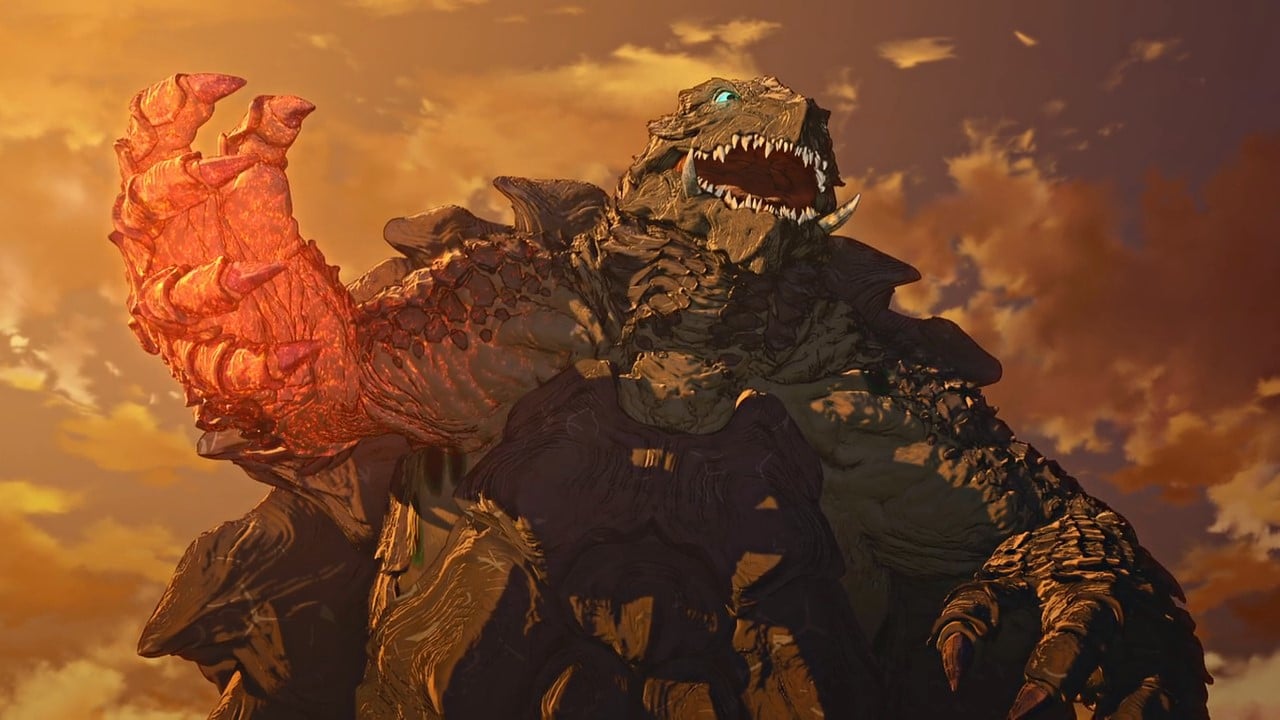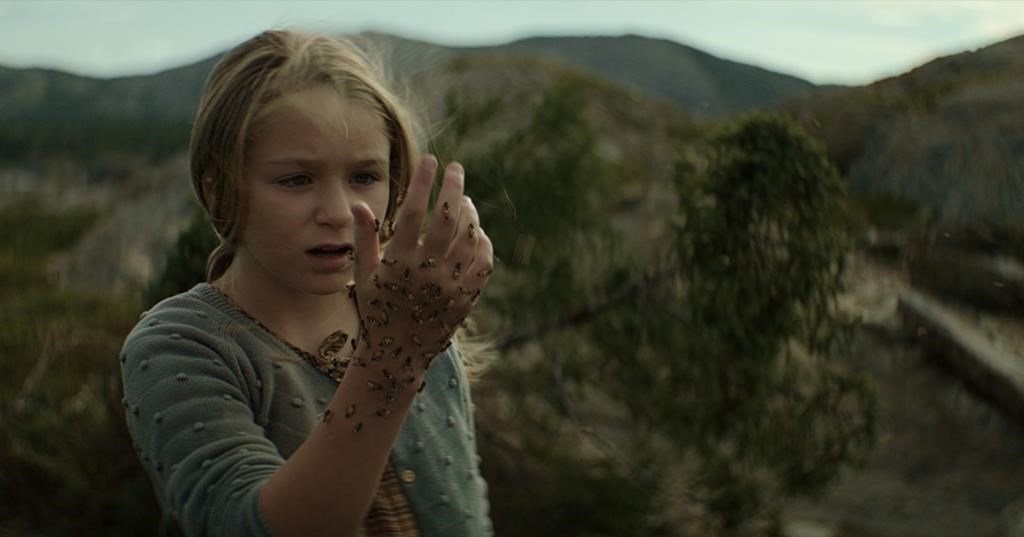Reviews
“Gamera Rebirth” Review – The Iconic Kaiju Returns in a Compelling Animated Series

One of the greatest underdogs in daikaijū history is a turtle. To be more exact, a giant turtle who breathes flames, flies by jet propulsion and, most importantly, protects mankind from other colossal monsters. And after a lengthy absence on screen, the herculean turtle Gamera is back in an animated series called Gamera Rebirth. Netflix has gifted eager fans an exciting new story that demonstrates the titanic turtle’s appeal and extends his legacy.
While Gamera isn’t exactly unknown by the masses, his presence is, for the most part, limited to the East. There is also the undeniable fact that Gamera is overshadowed by his clear inspiration and pop-cultural counterpart, Godzilla. Between these two Japanese icons, though, Gamera has had a tougher time overcoming his past. An acclaimed ‘90s trilogy of films, one that reimagined Gamera as a serious antihero, was directly responsible for the monster’s critical reevaluation. Yet after those films and a standalone reboot in 2006, Gamera disappeared from the public eye. So to say fans were itching for more of the turtle kaijū is an understatement.
It might seem like an animated series is the least desirable route for the Gamera franchise. Especially when fans have been clamoring for another live-action film, and when other recent kaijū animations have yielded mixed responses. Rebirth, however, is a more than ample continuation of Gamera’s legend. With six extended episodes to tell its story, the series wastes no time getting the titular titan on screen and delivering a plot that would surely lose something in a standard-length film.
Admittedly, the biggest hurdle of Rebirth is its art. This unique visual style, which is similar to Netflix’s Ultraman, amounts to awkward and stiff animation a lot of the time. The series’ visual aesthetic, though, best suits the kaijū battles. The monsters themselves possess uncanny texturing and movement that make them appear appropriately out of this world. Redesigns of once goofy-looking villains from the classic films are stunning; the likes of Jiger and Zigra are now marvelously realized and imposing. Seeing them in action is the highlight of each episode.
With Rebirth’s story set in 1989, fans of Shūsuke Kaneko’s Heisei trilogy will be disappointed to learn this isn’t the long-sought continuation of things set up but left unresolved in Revenge of Iris. So you can’t expect to see kaijū who don’t even exist yet. That doesn’t mean Kaneko’s films are entirely ignored, though. Gamera’s role as the planet’s sole protector remains intact, and the mystical bond shared between young humans and Gamera is here as well. Rebirth indeed functions more as a reworking of the Shōwa era, mainly due to the show having children as Gamera’s human emissaries. Yet the end-of-world stakes, dark machinations, and the use of ancient prophecies and conspiracies all give the series a modern quality. Gamera’s own physical appearance and superpowers are also influenced by the Heisei period.
The human element in kaijū stories can often be lacking or plain uninteresting. Rebirth manages to defy the odds by serving up compelling human subplots that tie well into Gamera’s mission. The four young protagonists — Japanese locals Boco, Joe, and Junichi, and one American army brat nicknamed Brody — aren’t just here to pad the time until the monster action starts up. They have distinct backgrounds, personalities, and motivations that not only make them a massive improvement on the kind of kids routinely seen in the vintage Gamera films, but they also anchor everything. They are similar to the children of Gamera the Brave in the sense that they are well written and never exceptionally annoying.
Fans of Gamera may be inclined to disregard an animated series starring children, but that would be a mistake. While Rebirth looks like kiddy fare, this series is well suited for older audiences. You can expect mature language, moments of graphic violence, and undiluted kaijū carnage. More than that, the story also becomes increasingly bleak and severe with each new episode. Gamera’s greatest admirers will understandably want another live-action adventure. In the meantime, this emotional, ambitious, and well-told story has more than enough to tide you over before Gamera can hopefully take flight again.
Gamera Rebirth is now streaming on Netflix, and the entire live-action catalogue of Gamera movies – 12 in total – is now available to stream on SCREAMBOX.


Image: Netflix

Reviews
‘The King Tide’: An Island Town Rots with Moral Decay in Canadian Folk Horror Fable [Review]

The opening scenes of director Christian Sparkes’ The King Tide set an ominous tone: a powerful storm takes down the power lines of a small island town as a pregnant woman loses her child while her dementia-suffering mother sits nearby. In the morning, as the town takes stock of the damage and the power is restored, a surprising discovery is found in an overturned boat in the harbour: a baby girl…with the ability to heal.
Writers Albert Shin and William Woods, working from a story by Kevin Coughlin and Ryan Grassby, treat the story as something of a morality tale mixed with a fable. Following the cold open, the action jumps ahead 10 years at a point when the unnamed island (the film was shot in Newfoundland, Canada) is thriving. The fishing is bountiful, the islanders are self-sufficient and have cut ties with the mainland, and most everyone is happy.
As characters are prone to saying, it’s all thanks to Isla (Alix West Lefler), the miracle baby who has grown up worshipped by the islanders. While Mayor Bobby Bentham (Clayne Crawford) and his wife Grace (Lara Jean Chorostecki) endeavor to raise Isla like any other little girl, the reality is that the island’s entire ecosystem revolves around her miraculous powers. It is only because of Isla that they survive; every aspect of their lives – from medicine to food – relies on her.
Each day the citizens line up for their allotted time with the young girl – be it to stave off breast cancer, like Charlotte (Kathryn Greenwood), or recover from another night of heavy drinking like former doctor, Beau (Aden Young). There’s even a predetermined schedule for when she will go out on the boats and use her power to lure fish into the nets.

One fateful day, Bobby succumbs to peer pressure and alters Isla’s schedule at the last minute to accompany cod fishermen Marlon (Michael Greyeyes) and Dillon (Ryan McDonald). A childish game with fatal consequences is played, but with Isla indisposed, a young boy, who would have otherwise been fine, dies. And while the rest of the community grieves, it is Isla who is completely shaken and, unexpectedly, loses her powers.
Suddenly the entire balance of the island is thrown off. Folks like Grace’s mother, Faye (Frances Fisher), who relied on Isla to keep her dementia at bay, suddenly reckon with mortality, while the food security of the town is called into question. Faye’s late-night “support group” meetings take on an urgent and secretive tone and the townspeople claim ownership of Isla’s time despite Bobby and Beau’s protests that she needs rest to recover from her trauma.
Like the best thrillers, the politics and personalities within the community come into play as morals are compromised and the good of individuals vs the collective is played out in increasingly desperate situations. The King Tide excels because it is interested in exploring the competing motivations of the townspeople, while also resolutely refusing to paint anyone as inherently good or bad. These are desperate people, determined to remain independent and free from outside interference, while protecting their trapped-in-amber way of life.

These developments work because there’s a humanity to the characters and The King Tide wisely relies heavily on its deep bench castoff character actors to drive the conflict. Crawford is the de facto protagonist of the ensemble and he’s also the most straightforward character: Bobby is a good man and a loving father, but he’s no white knight. At several points in the film, his willingness to acquiesce to the demands of the community and retain his power causes events to spiral further out of control.
Even more fascinating are Grace and Faye, two commanding women whose capacity for maternal love is matched – or eclipsed – by their own self-interests. A mid-film discovery about Isla’s power reframes Grace’s priorities, ultimately pitting her against her husband. As a result, Grace is incredibly compelling and frustrating (in a good way) and Chorostecki, who has done great genre work on both Hannibal to Chucky, plays the moral ambiguity exactly right. Grace is a fascinating and flawed human character in a film filled with them.
The same goes for Fisher, who deftly balances Faye’s grandmotherly love for Isla with the needs of the community and, by extension, her own health demands. In the hands of a lesser performer, it would be easy to hate Faye for her actions, but Fisher’s performance perfectly captures the fierce determination and fear that drives the island’s matriarch.
Finally, there’s Aden Young, The King Tide’s secret weapon. The ten-year jump reveals that Beau has undergone the most significant transformation: while everyone else has benefitted from Isla’s powers, her presence has eliminated the need for a doctor. With the clinic effectively shuttered, Beau has become an alcoholic; a shell of his former self with no purpose.
Like Bobby, Beau is the easiest character to root for because of his selfless desire to protect Isla, but Young (renowned for his work with Crawford on Rectify) unlocks the character’s tragic pathos and, in the process, becomes the film’s emotional anchor.

Framing the moral decline of the islanders and anticipating the unexpectedly devastating climax is the natural beauty of Newfoundland. As shot by cinematographer Mike McLaughlin, there’s a steely beauty to the geography, resplendent with rocky cliffs, pounding surf, and gusty bluffs that reinforce the islanders’ isolation.
There’s a fierce pride in their struggle to survive independently, evident in the simple lodgings and the antiquated alarm bell that is rung whenever fishing ships from the mainland stray too close. It’s a chilly, atmospheric calling card for one of the most picturesque provinces in Canada, but it is a perfect complement for the folk horror narrative.
Armed with serene, beautiful cinematography, murky moral developments, and a deep bench of talented character actors, The King Tide is a quiet gem that demands to be seen. It’s one of the year’s best genre films.
The King Tide is in theaters April 26, 2024.














You must be logged in to post a comment.